|
Cultivating our Futures:
FAO/Netherlands Conference on the Multifunctional Character of Agriculture
and Land |
|
|
|
Participants at the Conference on the Multifunctional Character of Agriculture and Land (MFCAL) met in Plenary on Monday for a general introduction and to discuss issues raised in the conference documents. |
|
|
|
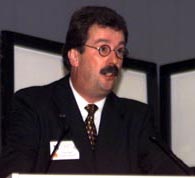 |
Conference Chair Hans Alders said the objective of the conference is to identify new policy options, practical methods and the necessary enabling environments for MFCAL with particular emphasis on raising awareness. The principal tasks of the conference are to review progress toward realizing the Rio Principles and identify the main issues to be addressed in the future. |
|
Louise Fresco, Director of the FAO Research, Extension and Training Division, outlined the method used in preparing for this conference, which was uniquely inductive, empirical and participatory and involved extensive peer review. |
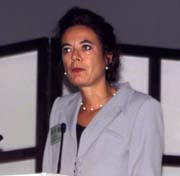
|
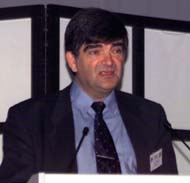 |
Michel Griffon, Director of the Economics Policy and Markets Programme, International Center for Agricultural Research and Development, introduced the Issues Paper, which outlines concepts, issues and policies relevant to MFCAL. |
|
Eric Smaling, Professor of Soil Science, Wageningen University and Research Center, introduced the Stock-taking Paper, explaining that it reviews recent contributions that the multifunctional character of agriculture has made to improving the sustainability of agriculture and related land use while maintaining its primary role of providing food security. |

|
|
|
|
|
|
|
|
|
|
 |
View from the back of the Expo Foyer, which serves as the conference's plenary hall. |
| Via Campesina's Paul Nicholson sitting beside Alex McCalla, Director of Rural Development for the World Bank | 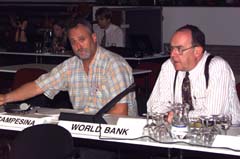 |
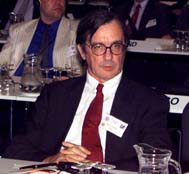
|
Henri Carsalade, Division of Sustainable Development at FAO, responded to questions regarding conference documents, stating that the conference summary report would set out the Chair’s conclusions, which will summarize the work of the conference, reflect the views expressed and be clearly identified as an FAO report. |
